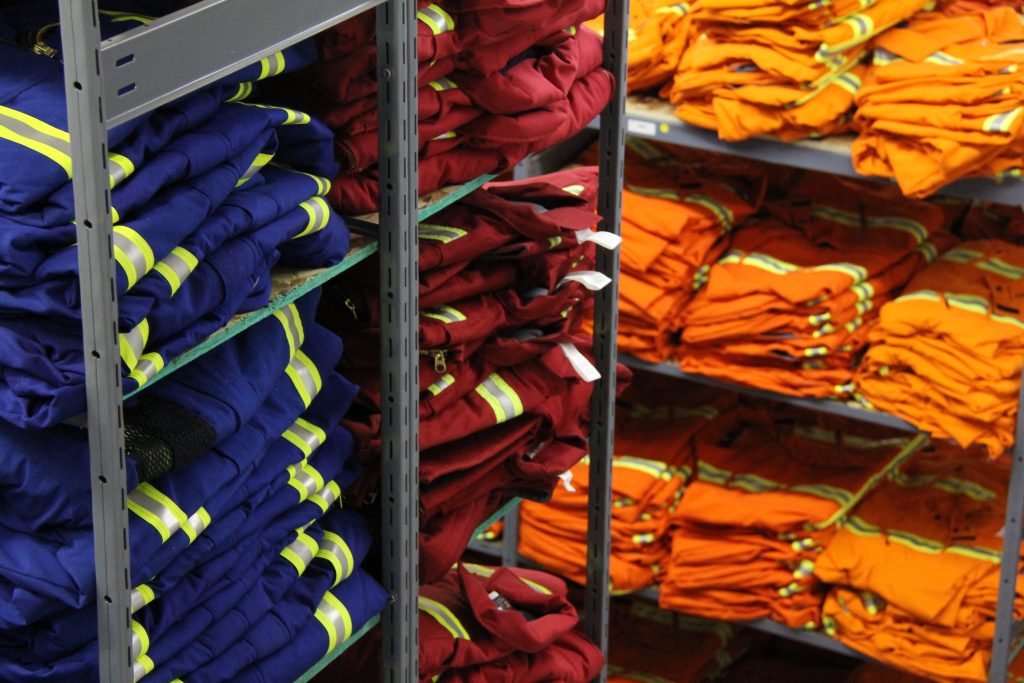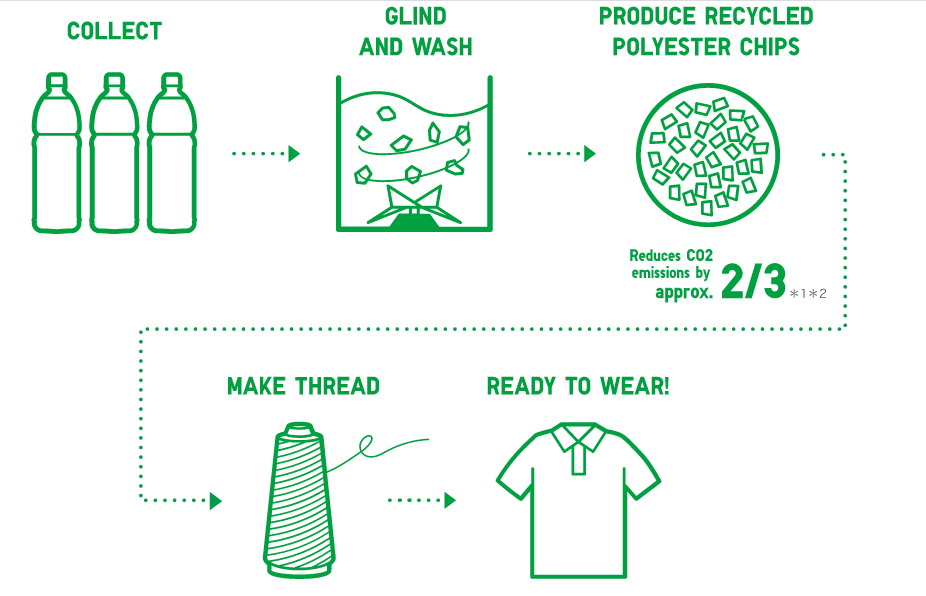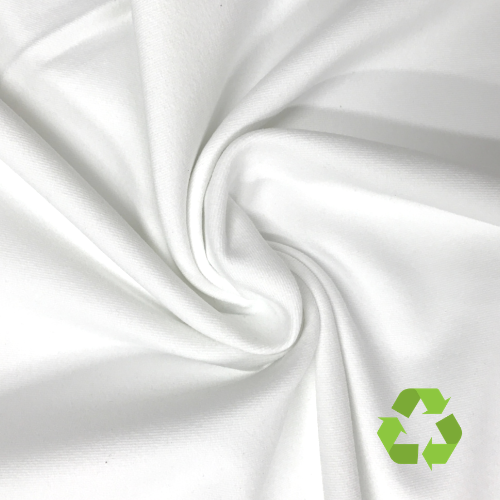If you’re a procurement manager or an OEM purchaser in the workwear industry, you’re probably starting to think about sustainable materials. Knowing the benefits and applications of recycled fabric can help you make decisions that are good for your business and good for the planet. Recycled fabrics reduce the need for new resources and reduce the environmental impact of making uniforms. They help save valuable resources and reduce the negative impact of making fabric on the environment. That makes them a great choice for sustainable workwear. Here’s what you need to know about the benefits and uses of recycled fabric for workwear.
What are the benefits of recycled fabrics?
Recycled fabrics have a lot of advantages beyond being good for the environment.
Conservation of Resources
Recycling fabric saves valuable natural resources like water and petroleum. When you reuse something, you don’t need to use a new resource. That means you have a smaller environmental footprint. For example, recycled polyester uses 59% less energy than virgin polyester. That’s a big energy savings and a big reduction in greenhouse gas emissions. It’s also a big help in the fight against climate change.
Reduction of Pollution
Making regular fabric often involves harsh chemicals and a lot of water. When you use recycled fabric, you don’t need to use those processes. That means you reduce pollution and reduce your environmental impact. That’s important for workwear brands that want to reduce their environmental footprint. It also means you don’t have to worry about chemicals getting into the water or soil and harming the environment or biodiversity.
Waste Reduction
Using things like plastic bottles that would otherwise end up in a landfill or the ocean is a great way to reduce waste. It helps solve waste management problems and supports a circular economy where things are used over and over again. When you reduce waste, you also reduce your waste disposal costs. You can also improve your environmental credentials, which is a big selling point to people who care about the environment.
Market Differentiation
If you use recycled fabric, you can appeal to the growing number of people who care about the environment. They’re looking for brands that are doing the right thing. They want to buy from companies that are doing their part to protect the planet. Showing that you care about the environment can help you build your brand and create customer loyalty. It can also help you stand out in a crowded market and attract partnerships with other organizations that care about the environment.

What can recycled fabric be used for?
Recycled fabric is versatile and can be used for a lot of different things in the workwear industry.
Uniforms and Workwear
You can use recycled polyester and recycled cotton to make uniforms and workwear that are durable and comfortable. They meet the high standards you need for workwear including durability and ease of care. You can also design recycled fabrics to meet industry standards for things like fire resistance, UV protection, and moisture management.
Protective Gear
You can use recycled polyester to make high-visibility clothing that’s important for safety in many industries. You can meet the necessary safety standards and be environmentally friendly at the same time. For example, a high-visibility vest made from recycled materials can be just as safe and durable as one made from virgin materials. You can also support environmental sustainability.
Insulation Materials
Recycled fabrics can be used to make insulation materials for clothing and equipment. For example, recycled denim is a popular choice for thermal insulation in jackets. It provides excellent thermal performance, so workers stay warm in cold environments without a lot of bulk or weight.
Accessory Items
You can use recycled fabric to make gloves, hats, socks, bags, and other accessories. That way, even the little things in a uniform are made sustainably. You can also put your logo and message on them to show your commitment to sustainability.
What are the pros and cons of recycled polyester?
Recycled polyester is a popular choice for many brands because it’s sustainable and performs well, but there are pros and cons to consider:
Pros
- Environmental Benefits: It reduces the need for virgin polyester, which saves resources and energy, lowers carbon emissions, and reduces environmental degradation.
- Durability: It’s as strong and durable as virgin polyester, so it’s suitable for heavy-duty workwear. Recycled polyester fabrics can withstand industrial laundering and extended use without compromising performance.
- Cost-Effective: It’s more expensive initially, but the long-term benefits and resource savings make it cost-effective. Over time, using recycled polyester can save you money, especially as the market for recycled materials grows and matures.
Cons
- Quality Variability: The quality of recycled polyester can vary depending on the source materials and production processes. Maintaining consistent quality requires strict quality control and reliable suppliers.
- Availability: You may not always be able to find high-quality recycled polyester, which can cause supply chain issues. You may need to establish long-term relationships with suppliers to ensure a steady supply of high-quality recycled materials.
- Processing Challenges: It requires specific processes to remove contaminants and maintain quality. These processes can be complicated and may require specialized equipment and expertise.
How are used beverage plastic bottles turned into recycled fabric?
The process of turning used plastic bottles into fabric is fascinating and shows how recycling technology has evolved:
- Collection: Plastic bottles are collected from recycling programs and waste management systems. This step requires collaboration with municipal recycling programs, private waste collectors, and environmental organizations.
- Cleaning and Sorting: The bottles are cleaned to remove labels, residues, and contaminants. They’re also sorted by type and color to ensure that only the best materials are used in the recycling process. This helps maintain the quality of the final product.
- Shredding: The cleaned bottles are shredded into small plastic flakes, which are easier to process. Shredding increases the surface area of the plastic, making it easier to melt and reform into new shapes.
- Melting and Extrusion: The plastic flakes are melted and extruded into fine fibers. These fibers are then spun into yarn. Extrusion is the process of forcing the melted plastic through tiny holes to create thin, thread-like fibers.
- Weaving or Knitting: The yarn made from the plastic fibers is woven or knitted into fabric. This fabric can be dyed and finished according to the desired specifications for various workwear applications. This step allows for a wide range of fabric types, from lightweight and breathable to heavy-duty and durable.
How sustainable is recycled polyester?
Recycled polyester is highly sustainable for several reasons:
- Energy Efficiency: It requires significantly less energy to produce recycled polyester compared to virgin polyester. This energy savings means fewer carbon emissions and a more environmentally friendly production process. It also means less reliance on fossil fuels, which further reduces the environmental impact.
- Reduction in Plastic Waste: By repurposing plastic waste into polyester fibers, we reduce the amount of plastic that ends up in landfills and oceans. This helps mitigate the environmental damage caused by plastic pollution. Reducing plastic waste also helps protect marine life and other ecosystems that are negatively affected by plastic pollution.
- Longevity: Recycled polyester has the same durability and longevity as virgin polyester, which means garments last longer and don’t need to be replaced as often. This reduces overall material and resource consumption. Long-lasting garments also save money for both manufacturers and consumers.
- Support for Circular Economy: Using recycled materials supports a circular economy, where products are continuously reused and recycled, minimizing waste and promoting sustainability. This approach conserves resources and encourages innovation in product design and manufacturing processes.
Which workwear brands are already using recycled fabric?
Many forward-thinking workwear brands are already using recycled fabrics, setting an example for the industry:
- Patagonia: Known for its environmental activism, Patagonia uses recycled polyester and other sustainable materials in its clothing lines, including workwear. Patagonia’s commitment to sustainability includes responsible material sourcing, waste reduction, and fair labor practices. He’re some links you may interest: Recycled Materials Workwear , Recycled Polyester Clothing
- Levi’s: This iconic brand offers jeans made from recycled denim, showing its commitment to sustainability. Levi’s sustainability initiatives also include reducing water usage in manufacturing and supporting sustainable cotton farming practices.Recycled Polyester Collection , Men’s Clothing Made from Recycled Polyester Fabric , Sustainable Clothing Collection
- The North Face: A well-known outdoor gear brand, The North Face incorporates recycled materials into many of its products, including workwear designed for harsh conditions. The North Face’s initiatives include using recycled polyester from plastic bottles and developing eco-friendly product lines. Circularity , Sustainable Outdoor Clothing & Gifts , Materials
- Carhartt: A leader in durable workwear, Carhartt has started incorporating recycled materials to increase the sustainability of its products. Carhartt’s approach focuses on durability and quality to ensure its products can withstand tough work conditions while being environmentally friendly. Carhartt Reworked , Used & Reworked Carhartt Men’s Outerwear
What should you consider when deciding to use recycled fabric in clothing?
When you decide to use recycled fabrics in your product line, there are several important factors to consider:
- Certifications: Make sure your company and suppliers have relevant certifications, such as the Global Recycled Standard (GRS). This certification ensures the materials used meet specific environmental and social criteria. Certifications provide credibility and assurance to consumers that the products they’re buying are truly sustainable.
- Supplier Verification: Verify that your suppliers have the necessary certifications and follow sustainable practices. This is important to maintain the integrity of your supply chain and ensure the quality of your products. Conduct regular audits and assessments to ensure compliance with sustainability standards.
- Contract Details: Discuss and finalize all details with your suppliers, including the recycled polyester content, label requirements, and any other specific needs related to the recycled fabric. Make sure these details are clearly outlined in your contracts to avoid any misunderstandings. Clear communication and thorough documentation prevent problems and ensure both parties are on the same page.
- Quality Assurance: Implement strict quality control measures to ensure the recycled fabrics meet the necessary standards for durability, comfort, and performance. Quality control processes should include regular testing and inspection of materials and finished products.
- Market Positioning: Use your use of recycled fabrics as a marketing point. Highlighting your commitment to sustainability can attract eco-conscious consumers and enhance your brand’s reputation. Use storytelling and transparency to connect with consumers and build trust.
Recycled Polyester vs. Polyester
When you compare recycled polyester to regular polyester, there are several advantages to using recycled materials:
- Environmental Impact: Recycled polyester has a much lower environmental impact than virgin polyester. You don’t need as much petroleum, you save energy, and you reduce plastic waste. By using recycled polyester, you can reduce your carbon footprint and help save the planet.
- Quality and Performance: Recycled polyester is almost the same as virgin polyester in terms of quality and performance. It’s just as durable, it wicks away moisture, and it’s comfortable. You can use it for workwear. The technology for recycling polyester has improved so much that you can get recycled polyester that’s just as good as virgin polyester.
- Cost: Recycled polyester might be more expensive initially because of the processing costs, but the long-term environmental benefits and the potential savings in resources make it cost-effective. As more people start using sustainable materials, the cost will come down.
When you start using recycled fabrics for workwear, you’re not only helping the environment, but you’re also positioning yourself as a responsible, forward-thinking business. You’re helping reduce waste and move toward a greener future.




